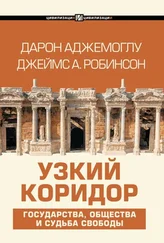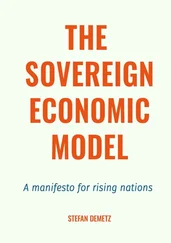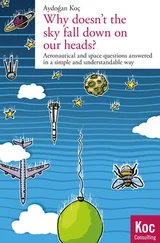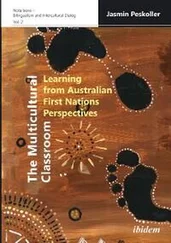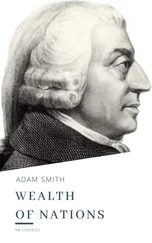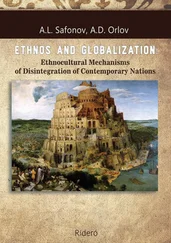In some cases the major centers collapsed from widespread violence. The Petexbatun region of Guatemala—where the great temples were subsequently pulled down and the stone used to build extensive defensive walls—provides one vivid example. As we’ll see in the next chapter, it was very similar to what happened in the later Roman Empire. Later, even in places such as Copán, where there are fewer signs of violence at the time of the collapse, many monuments were defaced or destroyed. In some places the elite remained even after the initial overthrow of the k’uhul ajaw . In Copán there is evidence of the elite continuing to erect new buildings for at least another two hundred years before they also disappeared. Elsewhere elites seem to have gone at the same time as the divine lord.
Existing archaeological evidence does not allow us to reach a definitive conclusion about why the k’uhul ajaw and elites surrounding him were overthrown and the institutions that had created the Maya Classical Era collapsed. We know this took place in the context of intensified inter-city warfare, and it seems likely that opposition and rebellion within the cities, perhaps led by different factions of the elite, overthrew the institution.
Though the extractive institutions that the Mayas created produced sufficient wealth for the cities to flourish and the elite to become wealthy and generate great art and monumental buildings, the system was not stable. The extractive institutions upon which this narrow elite ruled created extensive inequality, and thus the potential for infighting between those who could benefit from the wealth extracted from the people. This conflict ultimately led to the undoing of the Maya civilization.
WHAT GOES WRONG?
Extractive institutions are so common in history because they have a powerful logic: they can generate some limited prosperity while at the same time distributing it into the hands of a small elite. For this growth to happen, there must be political centralization. Once this is in place, the state—or the elite controlling the state—typically has incentives to invest and generate wealth, encourage others to invest so that the state can extract resources from them, and even mimic some of the processes that would normally be set in motion by inclusive economic institutions and markets. In the Caribbean plantation economies, extractive institutions took the form of the elite using coercion to force slaves to produce sugar. In the Soviet Union, they took the form of the Communist Party reallocating resources from agriculture to industry and structuring some sort of incentives for managers and workers. As we have seen, such incentives were undermined by the nature of the system.
The potential for creating extractive growth gives an impetus to political centralization and is the reason why King Shyaam wished to create the Kuba Kingdom, and likely accounts for why the Natufians in the Middle East set up a primitive form of law and order, hierarchy, and extractive institutions that would ultimately lead to the Neolithic Revolution. Similar processes also likely underpinned the emergence of settled societies and the transition to agriculture in the Americas, and can be seen in the sophisticated civilization that the Mayas built on foundations laid by highly extractive institutions coercing many for the benefit of their narrow elites.
The growth generated by extractive institutions is very different in nature from growth created under inclusive institutions, however. Most important, it is not sustainable. By their very nature, extractive institutions do not foster creative destruction and generate at best only a limited amount of technological progress. The growth they engender thus lasts for only so long. The Soviet experience gives a vivid illustration of this limit. Soviet Russia generated rapid growth as it caught up rapidly with some of the advanced technologies in the world, and resources were allocated out of the highly inefficient agricultural sector and into industry. But ultimately the incentives faced in every sector, from agriculture to industry, could not stimulate technological progress. This took place in only a few pockets where resources were being poured and where innovation was strongly rewarded because of its role in the competition with the West. Soviet growth, however rapid it was, was bound to be relatively short lived, and it was already running out of steam by the 1970s.
Lack of creative destruction and innovation is not the only reason why there are severe limits to growth under extractive institutions. The history of the Maya city-states illustrates a more ominous and, alas, more common end, again implied by the internal logic of extractive institutions. As these institutions create significant gains for the elite, there will be strong incentives for others to fight to replace the current elite. Infighting and instability are thus inherent features of extractive institutions, and they not only create further inefficiencies but also often reverse any political centralization, sometimes even leading to the total breakdown of law and order and descent into chaos, as the Maya city-states experienced following their relative success during their Classical Era.
Though inherently limited, growth under extractive institutions may nonetheless appear spectacular when it’s in motion. Many in the Soviet Union and many more in the Western world were awestruck by Soviet growth in the 1920s, ’30s, ’40s, ’50s, ’60s, and even as late as the ’70s, in the same way that they are mesmerized by the breakneck pace of economic growth in China today. But as we will discuss in greater detail in chapter 15, China under the rule of the Communist Party is another example of society experiencing growth under extractive institutions and is similarly unlikely to generate sustained growth unless it undergoes a fundamental political transformation toward inclusive political institutions.
6.
DRIFTING APART
HOW VENICE BECAME A MUSEUM
THE GROUP OF ISLANDS that form Venice lie at the far north of the Adriatic Sea. In the Middle Ages, Venice was possibly the richest place in the world, with the most advanced set of inclusive economic institutions underpinned by nascent political inclusiveness. It gained its independence in AD 810, at what turned out to be a fortuitous time. The economy of Europe was recovering from the decline it had suffered as the Roman Empire collapsed, and kings such as Charlemagne were reconstituting strong central political power. This led to stability, greater security, and an expansion of trade, which Venice was in a unique position to take advantage of. It was a nation of seafarers, placed right in the middle of the Mediterranean. From the East came spices, Byzantine-manufactured goods, and slaves. Venice became rich. By 1050, when Venice had already been expanding economically for at least a century, it had a population of 45,000 people. This increased by more than 50 percent, to 70,000, by 1200. By 1330 the population had again increased by another 50 percent, to 110,000; Venice was then as big as Paris, and probably three times the size of London.
One of the key bases for the economic expansion of Venice was a series of contractual innovations making economic institutions much more inclusive. The most famous was the commenda , a rudimentary type of joint stock company, which formed only for the duration of a single trading mission. A commenda involved two partners, a “sedentary” one who stayed in Venice and one who traveled. The sedentary partner put capital into the venture, while the traveling partner accompanied the cargo. Typically, the sedentary partner put in the lion’s share of the capital. Young entrepreneurs who did not have wealth themselves could then get into the trading business by traveling with the merchandise. It was a key channel of upward social mobility. Any losses in the voyage were shared according to the amount of capital the partners had put in. If the voyage made money, profits were based on two types of commenda contracts. If the commenda was unilateral, then the sedentary merchant provided 100 percent of the capital and received 75 percent of the profits. If it was bilateral, the sedentary merchant provided 67 percent of the capital and received 50 percent of the profits. Studying official documents, one sees how powerful a force the commenda was in fostering upward social mobility: these documents are full of new names, people who had previously not been among the Venetian elite. In government documents of AD 960, 971, and 982, the number of new names comprise 69 percent, 81 percent, and 65 percent, respectively, of those recorded.
Читать дальше


